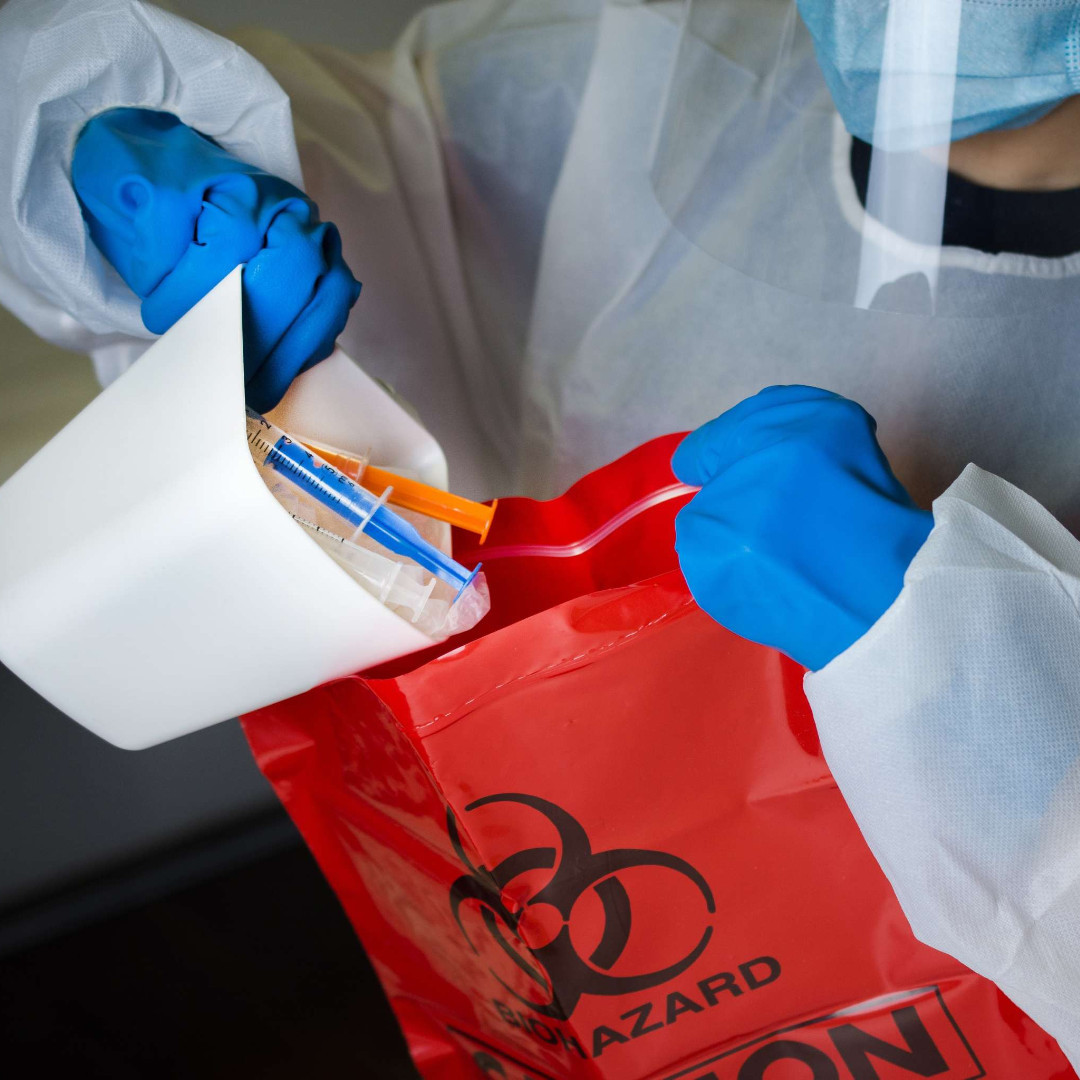Each year, it is estimated that there are approximately 3 million workplace exposures to bloodborne pathogens, risking employee health, not to mention costing employers millions of dollars.
Despite this statistic, it is a common train of thought that bloodborne pathogens aren’t something people usually need to be worried about. While bloodborne pathogens can be deadly, they are not airborne or infectious through touch. Rather, bloodborne exposures are commonly due to accidental punctures in most work settings. In fact, in the United States, there are an estimated 400,000 sharp injuries per year in the hospital setting alone.
Nonetheless, exposure can arise from several other facets, including bodily fluid spills, touching the eyes, nose or mouth, or even assaults.
Bear in mind, exposure can occur in any industry (not just healthcare facilities), making bloodborne pathogens training essential to almost any business or organization.
As a matter of fact, not only is this training essential to protecting employees, but it is required of any business or formal organization subject to the Occupational Safety and Health Administration (OSHA).
The OSHA Bloodborne Pathogens standard is known as 29 CFR 1910.1030. Under this standard, OSHA requires that employees who are at risk of exposure to blood or other potentially infectious materials (OPIMs) while on the job receive bloodborne pathogens training annually.
In case employee health and wellness and/or adhering to OSHA guidelines isn’t enough incentive for employers, businesses that do not comply can actually be fined a not-so-small amount. OSHA penalties for non-compliance include a fee of up to $14,502 per violation for a serious offense, plus $14,502 each day a cited organization does not correct the violation. If OSHA finds an act is repeated or willful, they can charge an organization up to $145,027 per violation.
With that said, what do businesses and/or facility managers need to know to stay compliant with OSHA? Keep Reading.
Defining Threats
Bloodborne pathogens (BBP) are disease-causing microorganisms that include but are not limited to hepatitis B (HBV), hepatitis C (HCV) and human immunodeficiency virus (HIV). They can be transmitted through human blood and other potentially infectious materials (OPIMs).
What are OPIMs? These are bodily fluids that can also transmit bloodborne pathogens. Examples of OPIMs include: vomit; semen; vaginal secretions or amniotic fluid; and other secretions resulting from the body.
Bloodborne pathogens training certifies that employees have been educated on how to protect themselves against exposure in the workplace. Training should educate attendees on everything related to the spread and protection against bloodborne pathogens.
Training is legally required to cover:
- Defining Bloodborne Pathogens and OPIMs
- The Most Common Bloodborne Pathogens
- How Bloodborne Pathogens are Transmitted
- How to Avoid Exposure
- How to use Personal Protective Equipment
- How to Prevent the Spread of BBP
- Examples of Control Procedure Plans
- What to do in the Event of Exposure
- Reporting Procedures
A comprehensive course should also review all labels and signs used in the workplace to communicate hazards. This includes primary and secondary labels of regulated waste containers, contaminated sharps containers, contaminated equipment, and contaminated laundry.
Benefits of Training
Inherently, the most essential benefit of bloodborne pathogens training is employee safety. Bloodborne pathogens training empowers employees to keep themselves healthy and safe when in the presence of potentially infectious items, surfaces or other exposures.
In the cleaning industry, it is important that any custodial staff — especially those that handle sharps in bins in restrooms, biohazard waste or other potentially contaminated objects — are trained and aware of proper handling protocols to minimize exposure risk. They should be prepared with the knowledge of what to do in the case of exposure.
Providing comprehensive training will also improve employee retention. Bloodborne pathogens training will make staff more proficient in health and safety protocols. The more knowledgeable a custodial team is, the less they will put themselves in potentially dangerous or harmful situations, ultimately resulting in fewer incidents or exposures.
Employees who have been educated on how to handle exposures and what to do in certain scenarios will be more confident in their roles. Confident employees are happier employees and job satisfaction is key to lowering employee turnover.
There re also legal and financial benefits to offering training. Bloodborne pathogens training will lead to fewer exposures resulting in insurance and legal claims. Fewer claims mean less money for an employer.
Who Needs Training?
As mentioned earlier, it is actually an OSHA requirement that any employee who is at risk of exposure to blood or OPIMs while on the job receive bloodborne pathogens training each year. In most cases, the need for training is obvious, especially for those in healthcare. But, training should be provided to any staff in any facility in any industry who may be at risk of exposure.
For the cleaning industry, this includes:
- Cleaning Staff/Janitors
- Equipment Repair Technicians
- Laundry Service Staff
- Housekeeping
- Hospice Workers
- Laboratory Workers
- Anyone who provides first aid regularly
It’s essential that cleaning and management professionals remember that bloodborne pathogens training certification is only valid for one year. Under OSHA’s Bloodborne Pathogens Standard, it is required for employers to provide annual training to employees who are at risk of exposure to blood or other potentially infectious materials while on the job, regardless of the employees’ prior training or education.
While it may seem inconvenient to some, there are a couple of reasons why OSHA requires employees to receive bloodborne pathogens training each year. First and foremost, OSHA’s mission is to “ensure safe and healthful working conditions for workers by setting and enforcing standards and by providing training, outreach, education and assistance.” They have pledged a duty to help protect those in the workforce from injury.
With that said, the primary driver for annual bloodborne pathogens training is protecting the health and safety of individuals in the workforce.
There are constant technological advancements and breakthroughs in research to assist in the protection of the workforce. As these novel guidances come forth, OSHA can and will update the standards for bloodborne pathogens training to ensure all employees at risk are provided the resources they need to remain safe in the workplace.
Second to that, all employees should have access to formal bloodborne pathogens training each year to avoid veteran training or training by someone who attended the course in the past but may not have interpreted or even modified a procedure since the training.
Lauren Belskie is a major contributor and the primary editor for the Imperial Dade Learning Center, a platform designed to answer common questions, provide insights on trends and offer creative solutions to help businesses create safer, healthier and cleaner facilities. She is the Marketing Operations Manager at Imperial Dade, producing articles, videos, trainings, and other educational content targeted to the janitorial services market.
This post, Bloodborne Pathogens Training: Why It’s Important, was first published by CleanLink on June 8, 2023.











